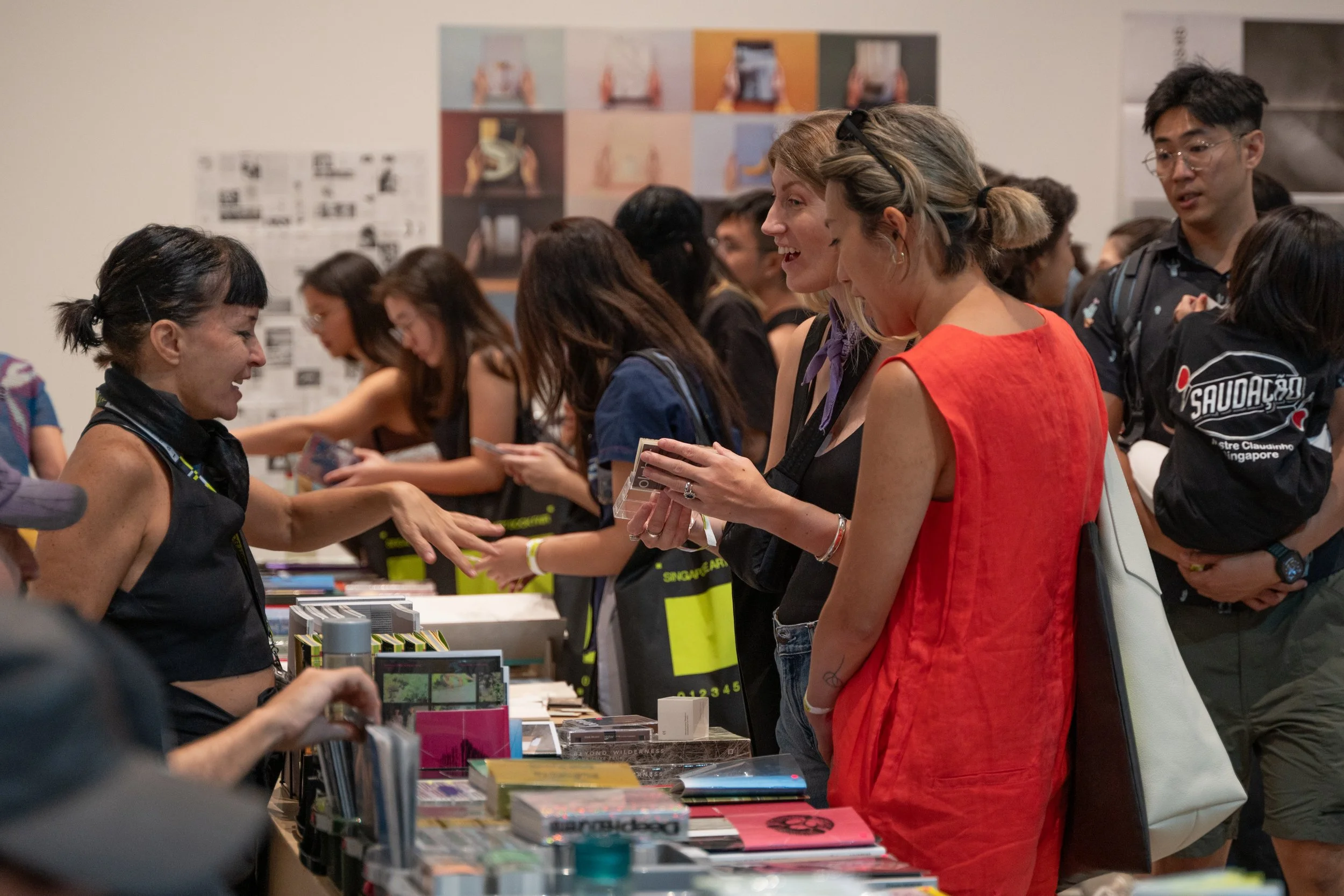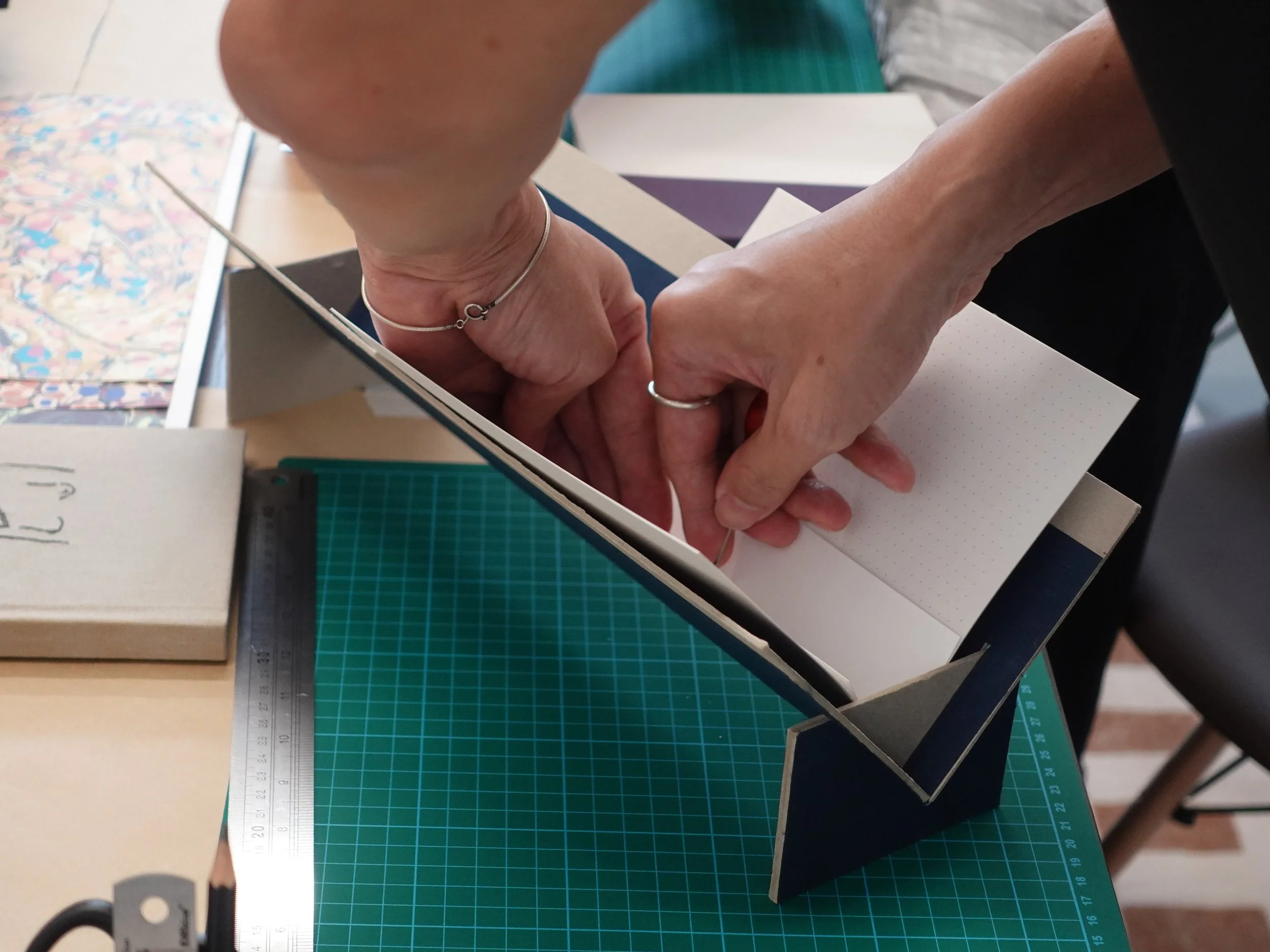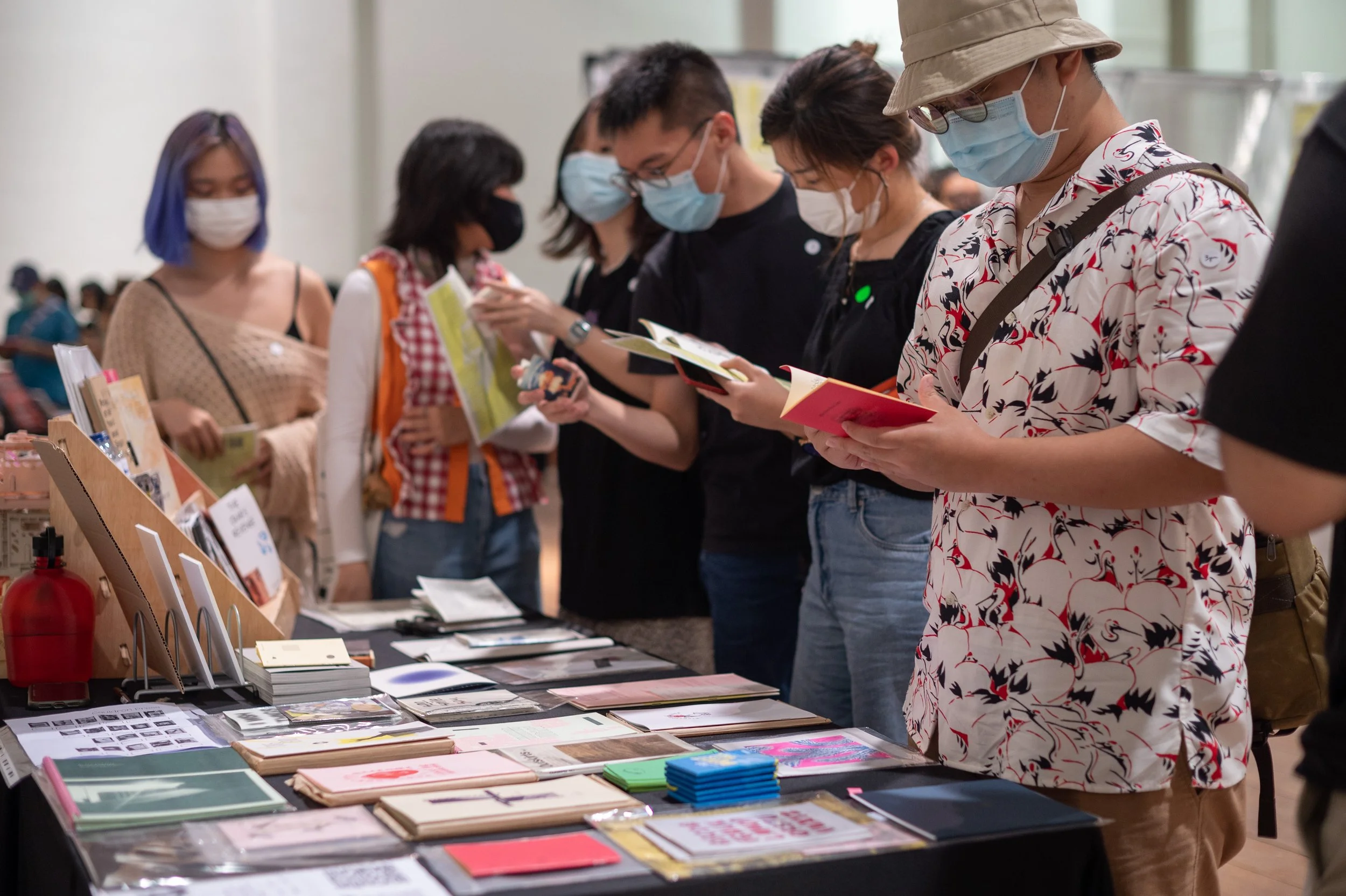Long Live the Art Book
11th edition of the Singapore Art Book Fair
The 10th edition of Singapore Art Book Fair in 2024.
What does it mean to sustain a fair for over a decade? Now that the Singapore Art Book Fair (SGABF) has confidently navigated that threshold, they are firmly in their 11th year with the largest edition yet. Held across 31 October to 2 November, the fair will host over 120 artists, designers, and zinemakers from around the world to gather at the two adjoining locations, New Art Museum Singapore and Whitestone Gallery. A diverse array of art publishing will be presented, including artists’ books, independent zines, photobooks, monographs, and print ephemera. Complementing this spread for the first time are workshops offering skills centred around the materiality and processes of book-making, such as book-binding and printmaking. In this article, I speak to Renée Ting, founder and director of SGABF, as well as a few other exhibitors from this year’s fair including Michelle Liew from benjamiiiiin, Goh Sing Hong from Variegated, and Syarafina Vidyadhana and Kat Methanisa from Cahyati Press.
Such flourishing longevity from a ground-up cultural initiative in Singapore tends to be a rare breed. Many major art spaces have been forced to vacate in the last five years, relegated to nomadic territories or embalming via archives. That SGABF enjoys total independence from institutional or government funding, having existed as a privately owned company since 2018 under Thing Books, makes it even rarer. It is unsurprising then that Ting describes her entrance into this new iteration as both apprehensive and exciting. “Being an independent festival, or having been around for so long and dealing with such a specific subject matter is not familiar ground for any of us,” she says of her impression coming into the latest fair. “But I think we are slowly making headway in terms of our goals, which is to deepen the understanding of art books and have people grow in appreciation for the medium.” The numbers reify her observations. From just around 1,000 visitors based in 2013, the fair has quadrupled its growth with over 4,500 fairgoers attending consistently in the last few years.
Organising an Art Book Fair: A Roundtable Discussion with speakers Sonel Breslav, Sunny Iyer, Naoko Higashi, Akira Kuroki, Renée Ting, Yang Dan, and Xu Ke as part of the Singapore Art Book Fair 2024 SG Art Book Dialogue programme.
SGABF has also come a long way in cementing its foothold within local cultural consciousness, evolving past its indie crafts persona to become Southeast Asia’s leading art book fair. Bookshops such as Cahyati Press from Bali which highlights women and queer voices are coming to the fair for the first time this year. They say, “The fair would be the perfect place to introduce our publications to a larger Southeast Asian and Asian audience.” For one, it seems that SGABF has crafted an image of the art book that is no longer viewed as a quaint interest for the literary or design minded, but draws from an interdisciplinary well of exchanges. Ting reflects on the unabashedly diverse community that traverses the fair’s space, particularly in recent years. She muses, “It is almost the only place where for three days, a wide range of everyone in the creative scene comes together.” She elaborates, “SGABF sees curators in the same room as experimental musicians, or dancers in the same room as academics.”
In this vein, the pilot 14–week residency offered by Thing Books this year included an eclectic mix of participants who had no experience in making art books before. The three residents were filmmaker Seth Cheong, alternative-rock band Subsonic Eye singer Nur Wahidah, and artist and musician Yuen Chee Wai who is also a member of the experimental band The Observatory. “Art books should be a reflection of the creator’s practice,” states Ting. By including individuals from such a broad range of disciplines, the notion of the art book is pushed further to take on new perspectives. With the residency culminating in a showcase of their publications during the fair, visitors will have the opportunity to witness the residents’ creations for themselves.
Singapore Art Book Fair exhibitors interacting with fairgoers.
At the same time, and in lockstep with its dedicated community of exhibitors, SGABF has cultivated a more expanded understanding of the art book. These days, audiences are eager to go beyond losing themselves in consumerism, and learn more about artist processes and bookmaking. Recurring exhibitors such as Michelle Liew from the zine-making collective benjamiiiiin, which also includes members Tisya Wong, Feranda Chua, Hans Chew, and Chloe Chee, speaks to the group’s changing interactions with audiences. She says, “People have become more curious, more open, and more eager to engage in conversations not only about the books themselves, but also the processes, the intentions, and the stories behind them.” Goh Sing Hong from the creative collective Variegated echoes these observations, saying, “Having been there for the fair’s 10th anniversary last year, it really hit us how much the fair has grown and matured. Each edition feels more intentional, with a wider range of voices and creative expressions.”
The 10th edition of Singapore Art Book Fair in 2024.
Keeping in mind the increasing demand for niche knowledge on the art book, the fair has decided to take on a paradoxical approach: expanding in size, while paring down to the art book’s roots. Such a move makes sense to Ting, who speaks about the financial realities of running the fair. She explains, “We wanted to come back to the things that we have lost, to the materiality of the books and to make the fair more ground-up and connected to its community again.” She continues, “However, we have to do all that while keeping in mind the costs of working in Singapore. As such, the only way was to make it bigger.” If there is anything that working on the fair for so long has taught her, it is that sentimentality and rigidity do not make for a successful business. “As the years have passed and we have witnessed the effects of COVID, and closures of various art spaces, we decided that it was important to always respond to and problem solve with what is right in front of us,” she elucidates. “We try not to have an elaborate plan for the future. Rather, I have found that it is more sustainable to be agile and fluid. If something is not working, we change course very quickly. I am not afraid to cut ties, make major decisions, or completely change routes if necessary.” Such tenacity and adaptability can perhaps account for how the fair has survived, even thrived, throughout the radical shifts in Singapore’s economic climate.
A book-making workshop that will be offered by the fair this year.
Going back to the essence of the art book also aids Ting in her decision-making, and it is what this year’s fair is curated around. Most notable is a selection of workshops focusing on technical crafts including reduction linocut and printing, as well as French link stitch bookbinding, which are being offered to discerning audiences. It is imperative to Ting that these activities allow the public and creators to deliberate meaningfully on the materiality of the art book. She cites that a limitation of being the only large-scale platform where artists can sell their art books is that the artists are impelled to make sure the books sales at the fair really count. The pressures of transmuting cash from the books means that sometimes connection with materiality, and small moments dwelling on each step of making can slip through the fissures. As such, Ting hopes that the workshops can carve out a quiet space for individuals to consciously reflect on the art book. She says, “These workshops seek to encourage thoughtfulness and a return to the visceral connection that a person can have with printed matter.”
Singapore Art Book Fair 2021.
In my interviews for this article, one common thread I have gleaned is how much passion the community has for both the art books and the unparalleled experience of being at the fair. It is this same fervour that I believe is the secret cornerstone that undergirds much of SGABF’s resilience. Ting tells me a story about 2021, during the height of COVID, when the team had to make a momentous decision to swim with the tide and continue with the fair online, or to cancel it entirely. They eventually decided against it, as the community of longtime fairgoers and exhibitors expressed their fondness for the intimate experience the fair brings that naturally resists digitalisation. “You pick it up, and you have a special connection with an object that was made by an artist who happens to be right in front of you, sharing their stories and processes with you,” she asserts. “It is a work of art where everything is intentional: the paper was chosen with care, the words are sequenced meticulously, and the weight of the book in your hands is very personal, making the experience wholly unique.”
These sentiments reverberate across the community. Just like Ting, Goh similarly reflects on the accessibility of the art book. She says, “Sometimes creative work in Singapore tends to get overlooked or boxed in, and making art books is a way to claim space. It allows creators to be bold and strange, and is an unfinished form that lets people into a process, an idea, or just a moment.” Liew also speaks of the fair’s contributions to the polycultures of Singapore’s literary landscape. She says, “Having the space to create and sell art books keeps zine-making culture alive, and gives independent publishing the oxygen it needs. Art books themselves create alternative routes that are slower, more tactile, and personal for sharing ideas, and offer an experience that you can hold in your hands to return to again and again.” As the years since COVID has accelerated the preference for screens with users preferring compact e-books over hefty tomes, the same thankfully cannot be said about the art book and the fair whose specific experiences are not easily transplanted to the digital realm.
Renée Ting, director and founder of Singapore Art Book Fair.
At the end of my conversation with Ting, I showed her an art book that I purchased from Thai photographer and graphic designer Wuthipol Ujathammarat at SGABF exactly 10 years ago. Its form is deceptively simple: an unspecified number of differently-sized photographic cards held within a plastic mesh bag reminiscent of sundries packaging at a market. A white lock clip seals it, and the contents are only viewable if I tear the netting apart. Ting’s eyes light up when we gush over how the syntax of the book is in what it conceals, its liminal form always anticipating transformation when I eventually open it up. There is an unspeakable joy that radiates from her whenever she talks about art books, and it is in line with her assertion that they will continue the fair for as long as she loves it. “I am a realist, so if it ends, it ends,” she says matter-of-factly. “But as long as I love it, I will keep doing it regardless of the stresses or financial situation. If there is a day I stop loving it, then that is the only day I will stop doing it.” Even if she cannot promise another decade, the best thing she hopes she can contribute to the arts community for now is to find ways to stick around and consistently push something out so that creators can confidently make their books each year, and audiences also have something to look forward to. While sticking around may sound easier than the back-breaking toil the fair’s team puts in, SGABF’s presence offers the arts ecosystem a hopeful and vibrant voice in these turbulent times.
Singapore Art Book Fair 2025 will be held across 31 October to 2 November at New Art Museum Singapore and Whitestone Gallery, both at Tanjong Pagar Distripark. More information here.







